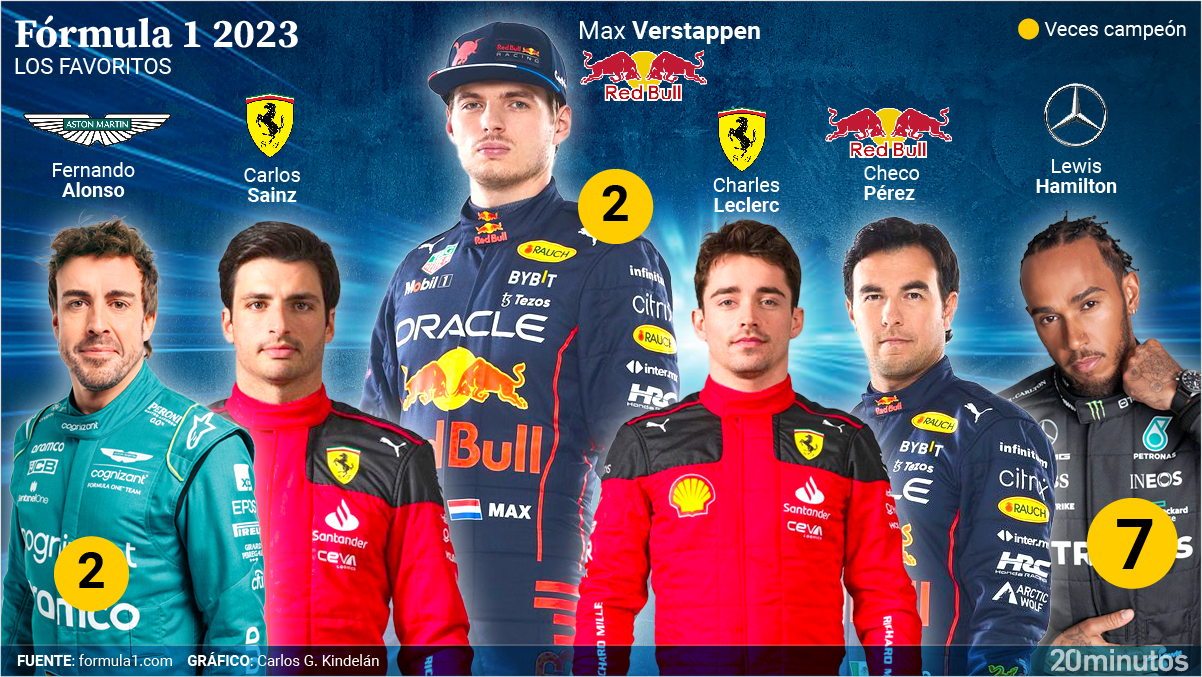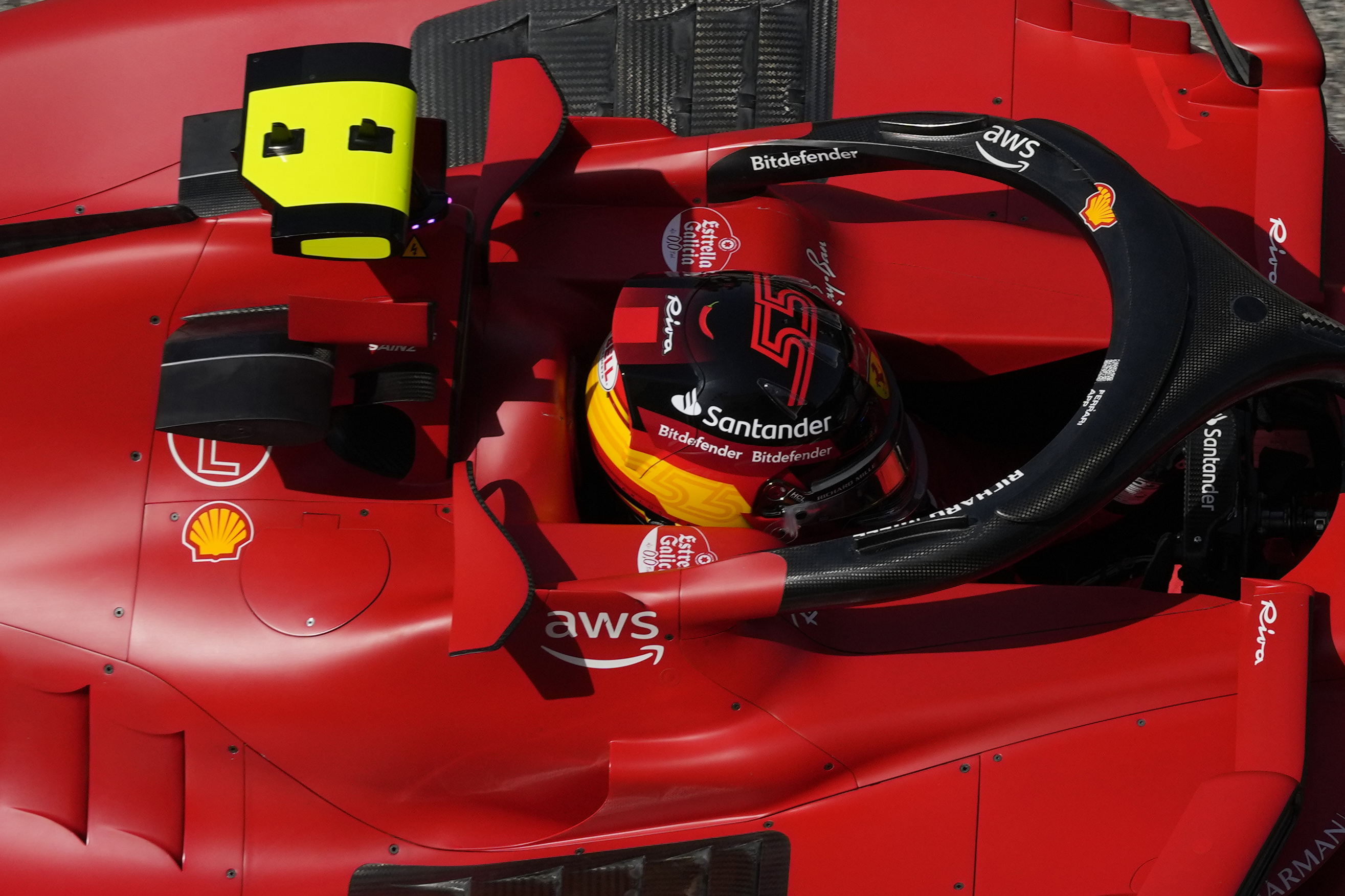[ad_1]
During a Formula 1 season, dozens of elements that influence the performance of single-seaters and drivers are part of the discussions and gatherings of engineers, professionals, and fans. Settings, tires, chassis, engine, wings, aerodynamics… Fundamental aspects that serve to explain and understand how everything works, but that can be reduced and simplified to a harsh reality: points rule, points define the champion driver and team world.
However, The Formula 1 World Cup scoring system has changed over the years until establishing the current one in 2009and the most clueless could be surprised by the huge amount of points to distribute throughout the 23 races that make up the 2023 championship, not counting sprint races or fastest laps. For this reason, it is essential to ask yourself a question: How does the Formula 1 scoring system work?
Points in the race: winner’s merit award
The fundamental are sunday races. It is where everything is decided, where the most points can be added by the pilots, and where more pilots choose to get a point. The victory, logically, is worth more than any other position in the race (25 points)but it is also much more valuable because of the distance it establishes with respect to the score of the immediate pursuers.
Thus, from the first to the tenth classified, all receive the reward for their performance on the track, in the following order:
- 1st – 25 points
- 2nd – 18 points
- 3rd – 15 points
- 4th – 12 points
- 5th – 10 points
- 6th – 8 points
- 7th – 6 points
- 8th – 4 points
- 9th – 2 points
- 10th – 1 point
Fastest lap in the race: a point makes the difference
However, a good position in the race is not always the only option that drivers and teams enjoy to score points from anywhere. In a sport where a thousandth can make a difference, a single point can decide an entire World Cup. That is why they are more important than ever, for example, the fastest laps in the race, which since 2019 add an extra point to the driver who achieves it… if you are among the top ten ranked.
An importance that the pilots themselves give it, as can be seen in many races. When the driver has enough space to make a final pit stop towards the final laps of any Grand Prix, always without running the risk of losing positionnever hesitates to enter to mount a fresh and unused set of soft tires. Thus, it takes advantage of the optimal track conditions that usually emerge as more rubber and less heat accumulate on the asphalt to perform a spectacular lap that will ensure that extra point.

A common strategy, for example, in Sergio Pérez, Verstappen’s squire at Red Bull, to subtract those points from opponents from other teams without risking Max’s victories. Even so, the current champion is a bad example, because he tends to want to win everything, and invests the overwhelming superiority that his car usually shows in making that added stop to take all the possible points.
An attitude, moreover, that has already allowed him to win a ‘grand chelem‘, the so-called perfect weekend: Victory, fastest race lap, leader in all Grand Prix laps, and ‘pole position’ on Saturday. To put it in context, Fernando Alonso has hardly achieved a ‘Grand Chelem’ in his entire career; Schumacher managed 5, Hamilton 6, and the record is held by Jim Clarke with 8.
The ‘lifeguard’ show of sprint racing
Although they are not really races to use, since they serve to define the ‘pole’ for the real race on Sunday, its gradual inclusion from 2021 until today has improved the show and has shaken up the usual dynamics of the pilots. The first two years were only three, but For this World Cup, the FIA has decided to include them in six Grand Prix: Azebaijan, Austria, Belgium, Qatar, United States (Austin) and Brazil.
Even so, its importance since last year is much greater, and transcends the already essential first place on the grid. At its premiere in 2021, only the podium from the sprint classification added points (3,2,1)but both last year and this year, the scoring system corresponds almost to the letter with the one that worked in the Sunday races between 2003 and 2009:
- 1st 8 points
- 2nd 7 points
- 3rd 6 points
- 4th 5 points
- 5th 4 points
- 6th 3 points
- 7th 2 points
- 8th 1 point
With this format, in addition, The classic classification is not lost, which is transferred to free training on Friday. Therefore, although in principle it favors the cars that rank best (which are usually also the usual leaders on Sundays), it also opens a window of opportunity for the less commonand increase the risk for leading teamsbecause a mistake leaves you out of action, without points on Saturday, and with a bad position on the grid on Sunday.

All this added to the spectacle offered by the pilots in a race reduced to a third of the laps of the test on Sunday, since the strongest try to be conservative, while the smartest attack from the beginning to surprise and win as many positions as possible. A system that encourages and rewards overtaking and courage, but also penalizes them if you make the slightest mistake.
Adding it all up (wins, fastest laps and sprint wins), this year a pilot could add at the end of the World Cup a whopping 646 points. A real outrage if we compare it to the points system of other times, and that does not allow realistic comparisons to be made in a hypothetical table of drivers with the most points in history. The points record, with the current mechanics, is held, of course, by the current champion Verstappen, with 454 points last season in 22 races.
[ad_2]



